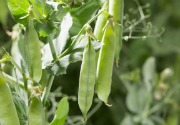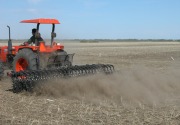| |
| |
 |
 |
| |
 |
|
MMMM d, yyyy |
|
| |
This year Canadian Agricultural Safety Week organizers want to empower farm families with the information they need to help keep everyone safe on the farm while preserving the farming lifestyle. The campaign runs from March 12 to 18, but farm safety is important all year long.
» Read more...
Research by Art Schaafsma has confirmed that seed treatment dust from planters is responsible for most seed treatment chemical escapes into the surrounding environment. Based on the research, Schaafsma identified five recommendations.
» Read more...
Researchers at the University of California – Los Angeles have developed a mathematical equation for leaf mass area that will help to determine what drives plant behaviours based on their cells. The research has important implications as plants adapt to a warming environment.
» Read more...
|
| |
 |
| |
|
| |

No other Group 2 herbicide offers the kind of relentless, Flush after flush™ control you’ll get with EVEREST ® 2.0. It doesn’t just get the weeds you see, it gets the weeds you know are coming. EVEREST 2.0 delivers superior control of troublesome flushing weeds like wild oats (including Group 1 resistant biotypes). In addition, you get key grass and broadleaf weeds like green foxtail, Japanese brome, tame oats, plus six broadleaf weeds. It works the first time, every time. And it keeps on working with long-lasting, Flush after flush control, reducing the need for an extra pass through the field.
>> Learn More |
| |
 |
 |
| |
|
| |
 Tom Warkentin, a breeder at the University of Saskatchewan’s Crop Development Centre, is working on a project focusing on breeding peas with increased availability of the micronutrient iron, as well as zinc, selenium and potassium. Iron is a key component in what’s often called “hidden hunger,” a deficiency in vitamins and minerals.
» Read more
Tom Warkentin, a breeder at the University of Saskatchewan’s Crop Development Centre, is working on a project focusing on breeding peas with increased availability of the micronutrient iron, as well as zinc, selenium and potassium. Iron is a key component in what’s often called “hidden hunger,” a deficiency in vitamins and minerals.
» Read more |
|
 Weed control challenges are becoming even more difficult as the number of herbicide-resistant weeds in pulse crops continues to grow. With more than 60 unique cases of herbicide resistance identified in Canada, the challenges will become even more daunting in the future.
» Read more
Weed control challenges are becoming even more difficult as the number of herbicide-resistant weeds in pulse crops continues to grow. With more than 60 unique cases of herbicide resistance identified in Canada, the challenges will become even more daunting in the future.
» Read more |
| |
|
| |
|
|
| |
| |








